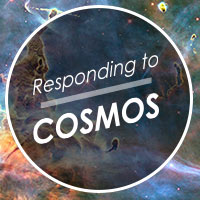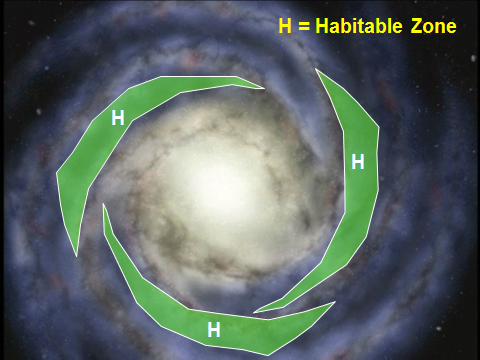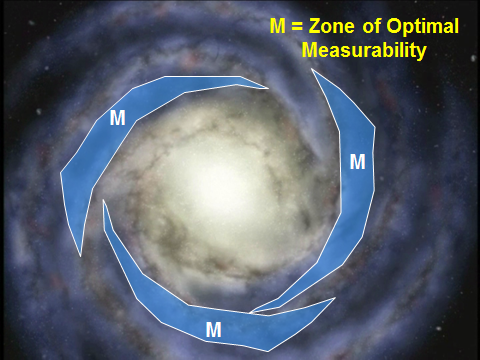 Physics, Earth & Space
Physics, Earth & Space
#3 of Our Top Ten Evolution Stories of 2014: Cosmos Finale Takes One Last Shot at the Privileged Planet Thesis

Editor’s note: The staff of Evolution News & Views wish you a happy New Year! We’re on a light reporting schedule as we enjoy some vacation time with family and friends. In the meantime we offer to our wonderful readers a countdown of the past year’s Top 10 stories reflecting the most exciting and important developments in the evolution debate, concluding on New Year’s Day. Enjoy!
Oh, and by the way, if you haven’t finalized your year-end contribution to support the work of the Center for Science & Culture, including ENV, please do so now. Any amount helps! We need you and greatly appreciate your generosity!
![]()
Published originally on June 10, 2014.
As David Klinghoffer noted yesterday, the final episode of Cosmos aired Sunday night. It was a fitting end, in keeping with what we’ve seen already in the series. Much of it covered uncontroversial science, such as how cosmic rays were discovered, or why cosmology developed concepts like dark matter (to help explain why stars orbit so quickly at the edge of their galaxies) and dark energy (to help explain why the universe continues to expand despite all the matter it contains).
Neil deGrasse Tyson rightly acknowledged that ideas about dark matter and dark energy are really a “code word for our ignorance.” A NASA website puts it this way:
What is Dark Energy? More is unknown than is known. We know how much dark energy there is because we know how it affects the Universe’s expansion. Other than that, it is a complete mystery. … What is Dark Matter? … We are much more certain what dark matter is not than we are what it is.
 Alongside such material was the customary promotion of scientism and materialism, and especially the Copernican Principle — the idea that the universe was not designed, and that we in no sense have a privileged existence within it.
Alongside such material was the customary promotion of scientism and materialism, and especially the Copernican Principle — the idea that the universe was not designed, and that we in no sense have a privileged existence within it.
Sunday night’s episode thus included a lengthy segment quoting Carl Sagan from the original Cosmos series giving his famous pale blue dot monologue. Sagan called Earth a “mote of dust suspended in a sunbeam,” and “a lonely speck in the great enveloping cosmic dark.” The monologue promotes the materialistic view that “In our obscurity, in all this vastness, there is no hint that help will come from elsewhere to save us from ourselves.” But perhaps the most telling Sagan quote replayed on Sunday night cited:
the delusion that we have some privileged position in the universe are challenged by this point of pale light.
That comment from Sagan, of course, played an important role in instigating a project by Guillermo Gonzalez and Jay Richards — their book The Privileged Planet, which investigated whether Earth does have a privileged position. The new Cosmos entirely ignores the actual debate over whether Earth’s position is “privileged,” and promotes a straw man caricature instead. It goes like this: If you think that Earth is a privileged planet, then you must think our planet is literally at the center of the universe, and you must think you have all the answers and there’s no reason to engage in further investigation.
Tyson asks us to conduct a “thought experiment” where we consider all the stars with planets in the galaxy:
Suppose on one of them there lives an intelligent species. One of the ten million life forms on that planet. And there’s a subgroup of that species who believe that they have it all figured out. Their world is the center of the universe. A universe made for them. And that they know everything they need to know about it. Their knowledge is complete. How seriously would you take their claim?
He continues, stating that “our ancestors believed that the universe was made for them” and that “the architecture of our language, myths, and dreams comes from that prescientific age.”
Yet again, Cosmos is whitewashing history. The notion that the universe was “made for” us or that we have a special place in it isn’t just some relic of the “prescientific age.” On the contrary, that view was held by the founders of modern science, and it continues to be taken seriously by influential scientists today. These scientists certainly don’t claim we “have it all figured out,” they don’t think the Earth is literally at “the center of the universe,” and they certainly don’t think “they know everything they need to know” or that “their knowledge is complete.”
Cosmos is also flat wrong in suggesting that such ideas are scientific unfruitful. As I mentioned, belief in a designed universe helped give rise to modern science. In contrast, it is the Copernican Principle promoted by Cosmos that has led to failed scientific predictions. In Chapters 12 and 13 of The Privileged Planet, Gonzalez and Richards identify eight bad predictions stemming from Sagan’s view:
- Earth, while it has a number of life-permitting properties, isn’t exceptionally suited for life in our Solar System. Other planets in the Solar System probably harbor life as well.
- Our Sun is a fairly ordinary and typical star.
- Our Solar System is typical; we should expect other Solar Systems to mirror our own.
- Even if our Solar System is not typical, there are lots of planetary configurations that are consistent with the presence of biological organisms. Variables like the number and types of planets and moons are mainly contingencies that have little to do with the existence of life in a planetary system.
- Our Solar System’s location in the Milky Way is relatively unimportant.
- Our galaxy is not particularly exceptional or important. Life could just as easily exist in old, small, elliptical, and irregular galaxies.
- The universe is infinite in space and matter and eternal in time.
- The laws of physics are not specially arranged for the existence of complex or intelligent life.
Gonzalez and Richards find that there are many parameters of our Earth, Sun, Moon, Solar System, galaxy, and universe that make our position uniquely suited to both life, and scientific discovery. They conclude that when we look at the scientific evidence, weighing it in a scale with these predictions, we find that the Copernican Principle
actually may have slowed the progress of science, by leading astronomers to underestimate the importance for life of seemingly trivial details like comets, asteroids, moons, and outlying planets. Similarly, it may have discouraged astronomers from giving the concept of our Solar System’s habitability zone due credit. (p. 256)
To appreciate how Sagan’s viewpoint has hindered scientific discovery, consider what Sagan wrote in the book, Cosmos, published a few years after the original 1980 Cosmos series aired. Here’s how he articulated the Copernican Principle:
We live on an insignificant planet of a humdrum star lost between two spiral arms in the outskirts of a galaxy which is a member of a sparse cluster of galaxies, tucked away in some forgotten corner of a universe. (Carl Sagan, Cosmos (New York: Ballantine, 1985), 159)
In reality, nothing could be further from the truth. Our Milky Way galaxy is flat and disk-shaped with spiral arms. At its center is a giant black hole that rips apart any star system that gets too close. The area around the galactic core is densely packed with stars and filled with intense radiation that would destroy Earth’s atmosphere and any life. The center of the galaxy is clearly not a desirable location.
On the other hand, a position too far from the center would also be inhospitable to life because the outskirts of the galaxy lack sufficient heavy elements necessary for complex life. The optimal location for life within our galaxy is a narrow band in the middle that escapes the large zones of deadly radiation at the core, yet contains the necessary elements. This region, called the galactic habitable zone, is precisely where our solar system resides.
The very concept of the galactic habitable zone was developed in part by Guillermo Gonzalez. It supports his reasoned conviction that the cosmos was designed, and that Earth occupies a privileged position within it. That’s good science.
Our distance from the center and our position between the galactic arms are also important. Were our solar system located inside the arms, extreme radiation from supernovae and “star nurseries” would again be a problem for life. Contrary to Dr. Sagan’s belief that we are “lost between two spiral arms,” we are placed exactly where a life-friendly solar system needs to be.
This diagram shows a rough approximation of the galactic habitable zone:

Earth’s position in the galaxy is privileged in other ways, too. Our location isn’t just optimal for life; it also provides an ideal position to view and learn about the universe. Spiral arms are full of dust and light that, much like city lights and clouds, would obscure astronomical observation. Between the spiral arms, our planet has a clear view of not just the galaxy but much of the universe. This diagram shows an approximation of the ideal location for astronomical observations in the galaxy:

Though these are rough diagrams, the zones in the galaxy that are optimal for habitability and for astronomical observation match very closely. Despite all of Sagan’s belittling remarks about our position in the galaxy, were it not for our privileged location, none of us — including Sagan — would have existed, much less would we be able to study the stars.
One Final Look at Cosmos‘s Metaphysical Bias
In the final episode, Tyson says: “That’s one of the things I love about science. We don’t have to pretend we have all the answers.” Yet over the course of 13 episodes, Cosmos has repeatedly sought to give answers to the greatest metaphysical questions facing mankind.
- The first episode quoted Carl Sagan: “The cosmos is all that is, or ever was, or ever will be.”
- The second episode concluded we are the result of “mindless” and “unguided” evolution.
- The third episode portrayed humanity as “an abandoned baby on a doorstep,” with no idea how we got here, and no idea “how to end our cosmic isolation.” Tyson said we looked for “special meaning” in our world, but whenever we think we’ve found something “sacred,” then we “deceive ourselves and others.” He told viewers that Isaac Newton’s religious studies “never led anywhere,” and said that Newton’s appealing to God is “the closing of a door. It doesn’t lead to other questions.”
- Episode four promoted the multiverse hypothesis with only the brief qualification that it is “speculative.”
- In episode five Tyson wrongly cast the Chinese philosopher Mozi, an early scientific thinker, as being “against faith” when in fact he was a monotheist.
- In episode six, Tyson said, “The most revolutionary innovation of all to come to us from this ancient world, was the idea that natural events were neither punishment nor reward from capricious gods. The workings of nature could be explained without invoking the supernatural.”
- Episode eleven promoted panspermia (without acknowledging its flaws), the Gaia hypothesis, an alarmist environmental mindset and a propagandistic, Star Trek-like picture of the future, comparing current skeptics of the “consensus” on climate change to Nazis.
You don’t have to take my word for it. The creators of Cosmos have been admirably clear about their agenda.
In an interview with Bill Moyers, Tyson admitted that Cosmos has larger, non-scientific goals, stating that we must “think of Cosmos not as a documentary about science,” but rather about “why science matters” and why “science is an enterprise that should be cherished as an activity of the free human mind.” He referred to the show’s hoped-for impact on “these states of mind that you carry with you for the rest of your life.” And what are those “states of mind”? When asked by Moyers whether faith and reason are compatible, he answered, “I don’t think they’re reconcilable,” and later stated: “God is an ever-receding pocket of scientific ignorance.”
Executive producer Seth MacFarlane said in an interview with Esquire: “There have to be people who are vocal about the advancement of knowledge over faith.”
Executive producer Brannon Braga is creator of numerous Star Trek episodes. There’s nothing wrong with that — in fact I’m a big fan of his work. Yet during a talk at an International Atheist Conference in 2006, Braga described his involvement in Star Trek as creating “atheist mythology.” He stated his “conviction that religion sucks, isn’t science great, and how the hell can we get the other 95% of the population to come to their senses?” He even said Star Trek provides a “template for a world” where “religion has been vanquished, and reason drives our hearts” — a future he says he “longs for.”
Cosmos appears to be part of his attempt to achieve these goals. He said in an interview that the new series aims to combat “dark forces of irrational thinking,” adding that: “Religion doesn’t own awe and mystery. Science does it better.”
This really is the essential message of Cosmos: religion leads into “darkness,” whereas only science offers truth. Such scientism is a corollary of Sagan’s view that the “The cosmos is all that is,” and that Earth is “an insignificant planet of a humdrum star lost between two spiral arms in the outskirts of a galaxy which is a member of a sparse cluster of galaxies, tucked away in some forgotten corner of a universe.” According to Cosmos, only by embracing these truths can we escape the confines of ignorance that entrap us.
However, every premise of this ideology is wrong:
- Earth is not lost between two spiral arms in the outskirts of the galaxy, but occupies a privileged position.
- The life-friendly fine-tuning and the finite nature of our universe suggests that our cosmos is not all that there is.
- Religious faith is not only conducive to scientific discovery, but the Judeo-Christian tradition helped give birth to modern science.
- Science is great, but it’s not the only way to discover truth.
Tyson is right to say that, “Pretending to know everything closes the door to finding out what’s really there.” But throughout this series, Cosmos has exemplified exactly the sort of complaisance that its host condemns. There is a genuine scientific controversy going on about materialism, but Cosmos has not in any way sought to objectively investigate the positions in that debate.
It has given the appearance of investigation, but in fact the series has consistently whitewashed both the scientific and the historical evidence, evidence that shows materialism to be a false picture of reality. That’s too bad. It’s a disservice to science, and to the program’s intended audience. But frankly what else would you expect from a team of celebrity atheists, handed millions of dollars to promote their views on national television?
Image source: Fox TV.

